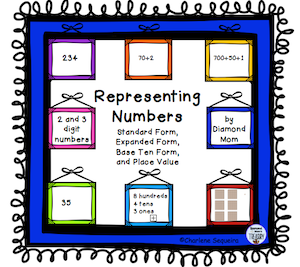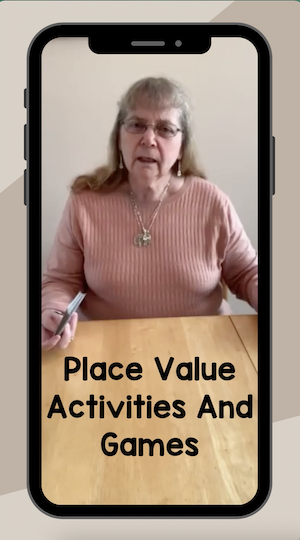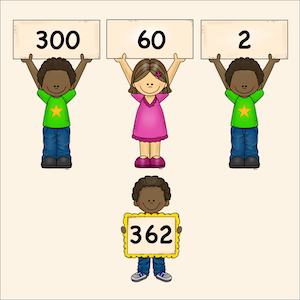|
Do your students struggle to make sense out of math? Do they grumble and get frustrated whenever it is time for math? Maybe they just need to have more practice manipulating things and visualizing concepts. Using concrete materials and hands on activities is the best way, in my opinion, to help kids make sense out of the math concepts they are being taught. However, at some point they need to be able to move from the concrete to the abstract. Here are a few ideas that combine both as they move towards that transition. Basic FactsWhen we talk about basic facts, we usually mean addition and subtraction facts of single digit numbers. These are the foundation for all other addition and subtraction problems and they are also the base for multiplication and division. If kids are to make sense and be successful with more complex situations, they need to have a good handle on their basic facts. Start out by using objects and combining them for addition and removing some for subtraction. As these steps are practiced, try using words like adding and plus or taking away and minus so that when the number sentences are used, they will be familiar with the language. When the number sentences are added, make sure to have an image of the objects there as well so the correlation between the concrete and abstract is visible. Fact Families and Number BondsFact family triangles help kids to see the relationship between addition and subtraction and the separate elements. Number bonds are another way of representing this. Try using objects and breaking them down into the different sets so that they can actually count and check to see that the addition and subtraction sentences work. Here are some resources that I created to practice using fact family triangles and number bonds. Click on the images to check them out. Representing Numbers And Place ValueOnce kids are able to recognize numbers up to ten, it is time to start looking more closely at numbers with two or more digits. They may be able to count past ten and even up to one hundred, but do they really understand what the digits in the numbers mean when they look at them? In most cases, they think of a number such as 324 to be a 3, a 2, and a 4. They hear three hundred twenty-four when they say the number out loud, but they don't really understand that it is 300 plus 20 plus 4. There are several ways to help them figure this out. Here are a couple of ways that I like to use. Base Ten BlocksBase ten blocks allow kids to manipulate objects to show different numbers. They can touch the hundreds, tens, and ones as they count them and move them around. Once they can accurately create numbers using the blocks, they can draw them using large squares for hundreds, rectangles for tens, and small squares for ones. Expanded NotationExpanded notation stretches the number out so that each of the digits is represented with its value. For example: 523 is really 500+20+3. Start out using the base ten blocks to show what it looks like before moving to the abstract addition sentence. Practice saying different numbers and then representing them with the base ten blocks. Once they can show the number correctly each time, add in the written component. Draw a picture of the number using base ten symbols and write the expanded addition sentence under it. Once they get comfortable with recognizing the standard notation and representing it with base ten blocks and expanded notation, matching the 3 different formats can be added. Here is a resource I created that does that. It also has a bingo component. Click on the images to see more. Check out the video below for an explanation about how to use this resource to help kids understand ways to represent numbers. Another way to show numbers with their actual values is to make card stock strips with 100,200,300,400,500,600,700,800,900 on them, and shorter ones with 10,20,30,40,50,60,70,80,90 on them, and shorter ones with 1,2,3,4,5,6,7,8,9 on them. Hand out the strips to the kids and have them show the actual numbers by standing together with the correctly numbered strips. For example: 362 is the number. The kids with 300, 60, and 2 would stand together to show that they make the number 362. They could also overlap their strips to show the standard notation number. if you would like some worksheets to practice representing numbers in a variety of ways, check out my place value category in my store. There you will find sets for different holidays and seasons. I have also created a sample set that is free for signing up for my newsletter.. These are only a few ideas for using hands on activities to help make sense of math concepts. Moving to the abstract will be an easy transition for some, but will be difficult for others. If necessary, add in concrete activities along the way to help kids see the relationships and apply concepts to other activities. Next time I will share some addition tips and strategies. Related PostsComments are closed.
|
About Me Charlene Sequeira
I am a wife, mother of 4, grandmother of 9, and a retired primary and music teacher. I love working with kids and continue to volunteer at school and teach ukulele. Categories
All
|
























 RSS Feed
RSS Feed